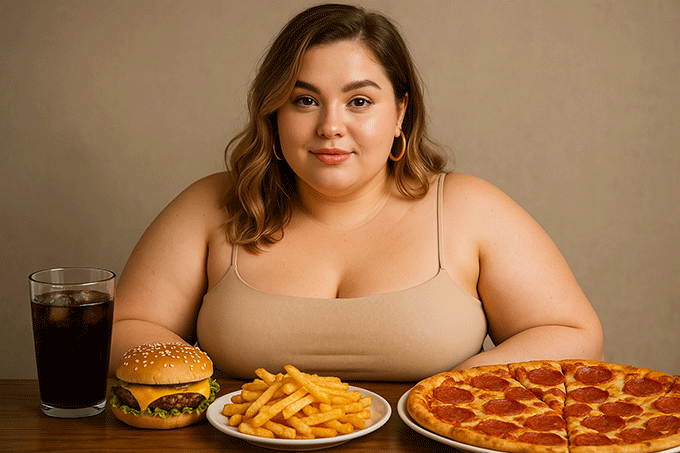Imagine piling your plate high with fluffy white rice or soft chapatis made from refined flour, the staples that make family dinners feel like home. It’s comfort food at its finest, a ritual passed down through generations. But here’s the gut-wrenching reality check: That very love affair with carbs might be quietly stacking the deck against your health, especially if you’re in India, where diabetes is exploding like never before. A bombshell new study is laying it bare—our diets, clocking in at a whopping 62% carbs, are supercharging risks for type 2 diabetes, prediabetes, and stubborn belly fat. And the fix? It’s not about starving yourself; it’s about smarter swaps that could dial down the danger without ditching the flavor.
Fresh off the press in Nature Medicine on September 30, 2025, this isn’t some small lab tweak—it’s the largest-ever snapshot of what over 18,000 Indian adults are actually eating, drawn from the ICMR-INDIAB survey spanning rural villages to bustling cities across all 30 states. Led by experts at the Madras Diabetes Research Foundation, the team crunched data from food diaries tracking 222 everyday eats, from idlis to dals, to uncover how our plates are tipping the scales toward metabolic mayhem. The verdict? Folks scarfing the most carbs faced a 14% jump in odds for fresh type 2 diabetes diagnoses—think HbA1c levels screaming over 6.5% or blood sugar spikes that won’t quit. Break it down by extremes: Those in the top carb-munching group were 30% more likely to land type 2, 20% for prediabetes, 22% for all-over obesity (BMI 25+), and 15% for that sneaky abdominal fat that hugs your waist like a bad habit.
Why the red flags on rice and roti? It’s the low-quality crew—refined white rice and milled wheat flour—that’s the real villain, making up over 44% of our calories in some spots. These stripped-down grains spike your blood sugar fast and furious, leaving your insulin scrambling and your cells worn out over time. No wonder India’s diabetes tally has ballooned to 101 million cases, with prediabetes nipping at another 136 million heels—numbers that hit harder in the South and East, where rice reigns supreme (up to 52% of energy in the Northeast). Even “healthier” milled whole grains didn’t save the day; they bumped risks by 9-12%, showing that grinding away the bran and germ robs the protective fiber punch. Toss in sneaky added sugars (2-8% of calories, way over the 5% sweet spot in half the country), and you’ve got a recipe for inflammation, fat storage, and a pancreas that’s crying uncle.
But hold onto hope—because the study doesn’t just doom and gloom; it hands us a lifeline through simple substitutions. Picture this: Swap out just 5% of your carb calories for protein from plants (think lentils and chickpeas), dairy (curd or paneer), eggs, or fish, and you slash type 2 and prediabetes risks by 6-10%. It’s like giving your body a steady energy drip instead of a sugar rollercoaster—plant proteins pack fiber and antioxidants that tame inflammation, while dairy’s got calcium and probiotics to steady blood sugar. Fish and eggs? Omega-3s and quality fats that fight oxidative stress without the overload. The catch? Red meat or other animal proteins (sans fish and eggs) and even fats like ghee or oils? They do zilch for glycemic woes and might even nudge obesity up by 5% if you lean too heavy on saturated stuff. Regional quirks add flavor to the advice: Up North, where dairy flows freer (3.6% of calories), risks dip a tad; in the Northeast’s meat-loving zones, fish could be your hero swap.
This hits home because it’s not abstract—it’s us. With carbs crowding out proteins (a measly 10-14% nationwide) and fats (22-28%), we’re in a nutrition transition that’s trading grandma’s balanced thali for processed pitfalls. The emotional toll? Families watching loved ones battle fatigue, blurred vision, or worse, knowing a plate tweak might’ve tipped the odds. Yet the study’s crystal ball is optimistic: Policy pushes for subsidized pulses, millet revivals (shoutout to Karnataka’s 10% millet magic), and public awareness could rewrite this story, curbing the NCD wave that’s already claiming lives too young.
Ready to tweak your thali without the hassle? Start small: Half your rice with dal or a boiled egg at lunch; stir curd into your sabzi for creaminess that sticks. Track portions with a fist-size rule—your carb handful shrinks, protein grows. It’s not sacrifice; it’s reclaiming vitality, one mindful bite at a time.
This report draws from the ICMR-INDIAB study’s landmark findings, published September 30, 2025, in Nature Medicine by researchers including Viswanathan Mohan and colleagues at the Madras Diabetes Research Foundation, spotlighting how everyday eats shape our health destiny.

